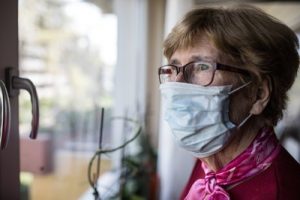While the novel coronavirus has affected us all, it has drastically changed the lives of specific groups of people, from rural populations to long-term care residents to communities of color. Startling statistics among these groups have pushed UNC researchers from a variety of disciplines into action. Check out this feature from the UNC Office of Research Communications, featuring School of Medicine’s Ross Boyce, MD, and several Carolina researchers.

In April, 57 people at a nursing home in Chatham County tested positive for COVID-19. That number includes both residents and staff members. That same month, 74 Mountaire Farms employees also tested positive — that’s more than one-fifth of the chicken plant’s workers.
People are quick to associate the virus with major metropolitan areas hit hard in the early months of the pandemic. New York City, in particular, struggled to stop soaring infection rates and, by July, the death toll in the Big Apple was twice that of entire nations such as China and France.
“I think COVID has been largely associated with urban centers due to issues of population density and crowding,” says Ross Boyce, an infectious disease researcher at UNC. “But I think some of those same risk factors are also at play in rural communities — and that shouldn’t be ignored.”
Nearly 40 percent of North Carolina’s population resides in rural communities, according to the 2010 U.S. Census. Rural communities often have fewer clinics and hospitals, which means less access to testing and treatment, and host major agricultural production facilities with many workers designated “essential.”
Boyce is currently leading a longitudinal study in Chatham County to understand how and why SARS-CoV-2 is spreading through this population — data that are direly needed since most of the current data rely on “imperfect disease markers,” or information about the disease that’s easier to access but may not tell the whole story.